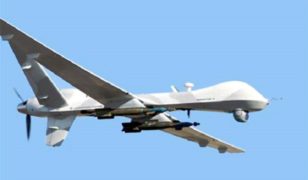House approves IC authorization bill for FY14 and FY15, including EMP measure

attack on the U.S.
The House on May 30 passed the Intelligence Authorization Act for Fiscal Years 2014 and 2015 by a recorded vote of 345 to 59.
The measure, H.R. 4681, did not make public the total dollar amount authorized to be spent by the Intelligence Community in either of the two fiscal years, nor the authorized number of personnel that can be employed by the intelligence agencies.
However, the House bill contained numerous provisions that offer some insights into the operations of the IC during the next two years:
EMP – The House passed an amendment offered by Rep. Trent Franks (R-AZ) which requires a report from the DNI on the threat posed by man-made electromagnetic pulse weapons to U.S. interests through 2025, from foreign countries or foreign non-state actors.
Al Qaeda – The House agreed to an amendment proposed by Rep. Ted Poe (R-TX) which requires the DNI to submit a report to Congress that presents a “comprehensive strategy to disrupt, dismantle, and defeat” Al Qaeda, its affiliated groups, associated groups and adherents.
Cybersecurity training – The House approved an amendment submitted by Pete Gallego (D-TX) which calls for retraining in cybersecurity skills to be made available to retired members of the Intelligence Community and for military veterans.
Computer theft by China – The House defeated an amendment proposed by Rep. Tim Bishop (D-NY) which would ensure that the Intelligence Community continues to protect the U.S. from Chinese and other state-sponsored computer theft. The Bishop amendment was voted down by a vote of 220 to 183.
Budget cuts — The DNI’s Intelligence Community Management Account was authorized to receive $528.2 million in FY2014 and $505.5 million in FY2015 — a year-over-year cut of 4.3 percent. Similarly, the same management account was authorized for 855 positions in FY 2014, but only 777 positions the following year — a 9 percent cut.
Software licensing – The chief information officer for each element of the IC, according to Section 109 of the approved legislation, must conduct an inventory of all existing software licenses, and look for ways to achieve cost savings and the “centralization” of the management of such software.







